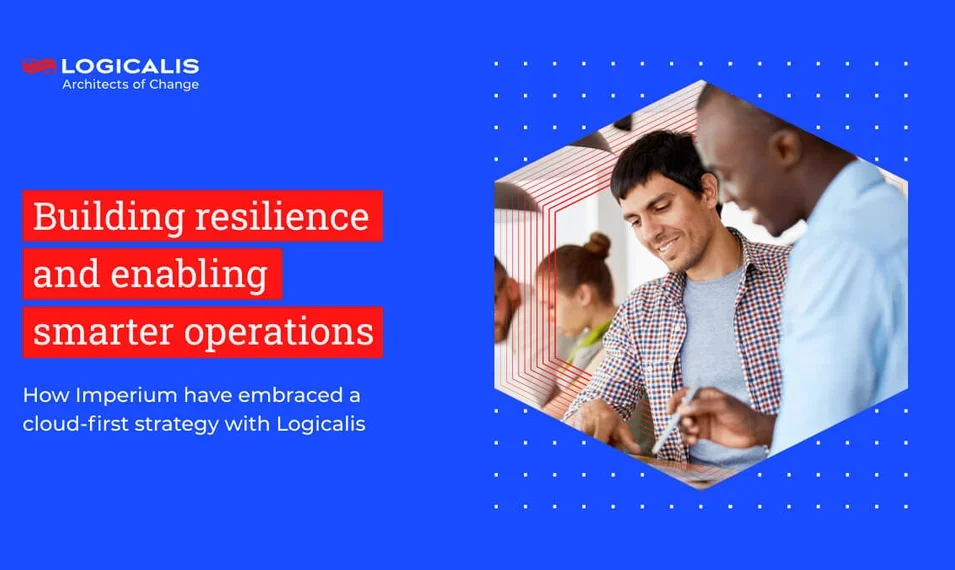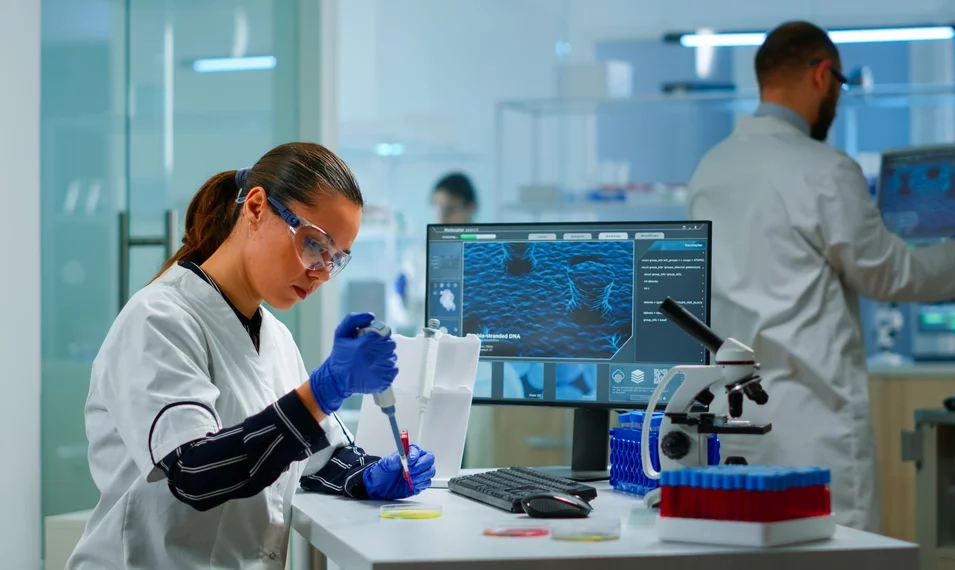, Apr 1, 2015
The University of Southampton is one of the UK's leading teaching and research institutions with a global reputation for cutting-edge, world-class research and scholarship across a wide range of subjects in engineering, science, social sciences, health and humanities.
Ranked amongst the top 1% of universities worldwide, Southampton is part of the Russell Group representing the UK's 24 leading research-focused universities.
With over 23,000 students and 5,000 staff across six campuses in the UK and Malaysia, Southampton combines academic excellence with an innovative and entrepreneurial culture to engage and challenge students and staff in their pursuit of new knowledge.
The University is also home to a number of world-leading research centres including the Institute for Life Sciences, the Southampton Marine and Maritime Institute and the Zepler Institute, the largest photonics and electronics institute in the UK.
The Challenge
The data centre and core network at the University of Southampton was reaching end of life. Rather than a straightforward rip and replace, the institution took the opportunity to comprehensively assess its IT strategy and sought a partner to help design and build a resilient and scalable network foundation to underpin the delivery of innovative IT services to its students into the future, and help build on its global status as a research leader.
Dr. Pete Hancock, Director of iSolutions at the University of Southampton, commented, "From the outset we saw our network and infrastructure as key building blocks that enables us to continue to grow and operate as a major Russell Group university and further build our work in the international arena. As these building blocks were nearing end-of-life we had to review our position to ensure that we made the right investment for the future."
As a research-led university, a new infrastructure would not only be required to support everyday network activity for its staff and student base, but also major research initiatives involving High Performance Computing and movement of huge datasets and information.
Dr. Hancock continued, "Data is the lifeblood of the research institution and being able to move it effectively, at high speed, and confidently is critical to its success. The right infrastructure not only means we can easily satisfy capacity needs for existing programmes but also will build capacity and opportunities for more collaboration projects and programmes around the globe in the future."
Add to that the ever-evolving technology needs and expectations of today's upwardly mobile student base, and Southampton knew that getting the right design, integration and technology for its network infrastructure now, would pay dividends in the future. The first step to all of this was to build a sustainable and scalable core and edge network, with high capacity and future application in mind.
The Solution
In 2012, iSolutions ran a procurement process against the NEUPC framework for networking equipment and service needs at Southampton. The aim was to appoint a partner to design, integrate and deliver a new core and edge network, including a new wireless infrastructure across the university's campus and halls of residence.
The process was concluded successfully with the appointment of Logicalis. Critical to this decision, was Logicalis' integration skills and technology-agnostic status:
"We started off the project with an open mind as to what technology we use," said Dr. Hancock. "We didn't want a partner that was sold on only one solution. We wanted to be confident that whoever we chose had the broad set of skills we needed to advise us through this major change. We also needed a partner that we felt we could work with; individuals who would be partners as opposed to a traditional client/supplier relationship. Logicalis delivered on all counts."
The first phase of the project saw Logicalis work intensively with the University to deliver a decision to use Cisco network equipment, and crucial core network and new data center designs to underpin its IT services.
Dave Key, IIP Programme Manager and Project Manager, was heavily involved in the project from the outset. He commented: "The design-work was critical, and the build up to the core migration was very detailed, all to make sure it ran smoothly. All this work meant that in a two-week period over this summer, Logicalis implemented the Cisco Nexus switches, migrating the core network, as well as moving the DHCP and DNS services for the university onto an Infoblox platform, and crucially, tested the core failover.
'We conducted a failover test between the two core switches – not something we've been able to do before. It was successful and smooth, and we had immediate confidence in the resilience. There's a direct RoI on this, a reduced impact on failures."
With the new data centre now populated with its network, and tested, the next phase of the project was integrating the underpinning infrastructure into the data centre, with the first virtual machines related to user-facing services ready for the new term.
The planning work, designs and site-surveys - for the network equipment at the edge and the wireless installation - is also complete and Logicalis and the University will shortly begin a phased roll-out across the campus and six halls of residence.
Logicalis is providing ongoing consultancy support to the design and delivery of these projects. In its role as a strategic partner, the Logicalis team is also working closely with Southampton on other projects that integrate with the central design, such as a planned move to a 10G fibre network in 2014 and extending the network to new build student residences.
Key Benefits
While the project-work continues, Southampton already sees the reward of stronger reliance for failover in its core network and sees a clear, and cost-effective path for more innovation through the design and foundation work with Logicalis.
According to Dr. Hancock, "The Logicalis relationship is delivering a strategic partnership that has aligned design decisions against our long-term aims.
It's also providing a greatly simplified procurement path for the duration of the multi-year contract.
According to Dr. Hancock, "The Logicalis relationship is delivering a strategic partnership that has aligned design decisions against our long-term aims. It's also providing a greatly simplified procurement path for the duration of the multi-year contract.
We're confident that the combination of Logicalis' consultancy and integration skills and the industry leading networking solutions provided by Cisco, will enable the us to step forward to deliver on research and learning, and the teaching strategies we plan for the future."
The Logicalis design has also enabled additional solutions at the University, such as installing an Infoblox solution for increased visibility and management of network activity. According to Mr. Key, this has provided a comprehensive stable base to allow the University to start looking at how it can do things better, he says, "It's a solution that improves our understanding of the network and therefore allows us to actively improve it."
Dr. Hancock concluded: "We wanted a partner relationship where we could develop mutual trust. We felt Logicalis could work in that mode, and they have certainly delivered. We have been able to develop a level of trust and partnership that has been instrumental to the success of the roll-out so far.
"This is just the first step. Working with Logicalis we're now well on the way to providing the high capacity and bandwidth as well as resilience we need for all networking activities, and the wide roll out of Wi-Fi across the University. Access to the network and network delivered services is a business necessity for all our staff and students now and into the future. This investment is securing our future."
Related Insights

Global , Aug 29, 2025
How Imperium have embraced a cloud-first strategy with Logicalis
Imperium partnered with Logicalis to navigate digital transformation, tackling compliance, security, and customer experience with strategic support and proactive IT services. Read the full solution to see how this partnership drives real impact.

Global , Jul 15, 2025
Cloud governance at scale: MAPFRE's journey towards digital efficiency
MAPFRE partnered with Logicalis Spain to simplify its complex multi-cloud environment by implementing a high-performance, secure Landing Zone in Azure. This enabled automated resource management, centralised governance, and agile scalability across over one million cloud assets.

Global , Jul 9, 2025
Revolutionising port operations: How Private 5G is powering automation at Peel Ports
Peel Ports is leading the way in port automation with a cutting-edge private 5G network at the Port of Liverpool. Discover how this ON-SIDE initiative is reshaping the future of logistics and infrastructure.

Global , Jul 3, 2025
How Sime centralised security with Logicalis and Microsoft Sentinel
Discover how Sime, a global investment holding company, transitioned from fragmented on-premise SIEM systems to a unified, scalable security framework—enhancing threat detection and reducing costs across regions.

Global , Nov 26, 2024
Case Studies, Videos
Logicalis DCC success story
Watch this video case study, which brings to life DCC’s transformative journey to standardise their approach to using Microsoft Azure across 50 businesses!

Global , Nov 20, 2024
One Planet, One Platform
How Logicalis connected their global carbon reporting dots with IBM Envizi.

Global , Nov 5, 2024
The Canadian International School of Hong Kong partners with Logicalis to fortify its security posture
Discover how Logicalis helped the Canadian International School of Hong Kong fortify its security posture.

Global , Oct 25, 2024
Case Studies, Videos
National Oceanography equip climate research vessels with Secure Connectivity
Read how the successful partnership between NOC and Logicalis delivered on the deployment of an advanced and all-encompassing wireless infrastructure solution that delivers improved levels of security to keep data safe.

Global , Oct 25, 2024
Case Studies, Videos
Logicalis partners with G.James to achieve sustainable business outcomes
G.James needed to modernise its ageing switching infrastructure whilst partnering with an organisation that aligns with their ESG goals and objectives.

Global , Oct 4, 2024
Noble Foods optimise operations and get closer to net zero with network transformation
Noble Foods sought to transform their network infrastructure to support critical business operations and meet sustainability goals.

Global , Sep 22, 2024
Driving innovation at Western Sydney University with an advanced Microsoft Azure approach
Logicalis Australia has assisted the University of Western Sydney (UWS) in enhancing their digital experience with an innovative migration to Microsoft Azure.

Global , Aug 16, 2024
Leading UK University partner with Logicalis to enhance campus experience with seamless and secure connectivity
Logicalis enabled the University to offer a modern, secure and user-friendly network that supports students and their devices around the clock.

Global , Jul 18, 2024
Case Studies, Videos
Digital Transformation of SMAS Torres Vedras
For SMAS Torres Vedras, the task at hand was not just about supplying water; it was about fostering public health, enhancing the quality of life, and promoting the benefits of consuming water from the public network.

The Rieck Group: Modernising IT infrastructure with Logicalis and FlashStack
Rieck Group partnered with Logicalis to completely modernise its IT infrastructure, replacing outdated systems with a high-performance, future-ready FlashStack solution. Read how this transformation enabled seamless operations, improved flexibility, and empowered Rieck to manage tasks in-house with greater efficiency.

Global , Apr 19, 2024
Enhancing security posture: A strategic partnership with a leading aerospace manufacturing corporation
Logicalis USA has partnered with a multinational corporation to execute a comprehensive Security Benchmark and Enablement Program. The initiative involves evaluating and enhancing the secure data management practices across 55 operating companies, aligning with government and Department of Defence security requirements.

Global , Apr 19, 2024
Enhancing security posture and operational efficiency for a leading health and toxicology company
An international health and toxicology company pursued a digital transformation to bolster security and operational efficiency. Facing challenges of security framework enhancement and staff turnover, the company sought a reliable IT security partner.

Global , Apr 19, 2024
UKI local authority strengthens cybersecurity and creates efficiencies with Logicalis and Microsoft Defender XDR
Large council recently worked with Logicalis to deploy the MXDR solution. This has drastically reduced the number of incidents and ensures complete resilience.

Global , Apr 19, 2024
Fortifying global gaming security: A Logicalis Intelligent Security success story.
Logicalis has successfully transformed the security infrastructure of a global lifestyle brand for gamers by deploying advanced MXDR capabilities. This initiative significantly enhanced security efficiency, reduced operational costs and improved the customer's security posture and resilience.

Global , Mar 7, 2024
Revolutionising mining operations with integrated communication solutions
A prominent Chilean mining company partnered with Logicalis to overcome operational challenges, including open-pit communications, new project execution, remote site connectivity, back-office automation, IT operations continuity, and network equipment renewal.

Global , Mar 7, 2024
Addressing Communication Challenges for an International Copper Producer
In the heart of Chile's mining landscape, a prominent international copper producer recently navigated complex communication and IT infrastructure challenges. Operating discreetly, this case study unveils the strategic objectives, implemented solutions, and resulting business benefits achieved by the client in overcoming these hurdles.

Global , Mar 7, 2024
Advancing Connectivity and Reliability with Private Wireless Networks
An international fertilizer company partnered with Logicalis to implement private 4G/5G networks, focusing on outdoor and indoor coverage. Logicalis deployed a phased methodology, ensuring redundancy with a decentralized model and achieving comprehensive coverage. The private 5G networks enhanced reliability, stability, and lower latency, supporting mission-critical applications in mining environments and setting the stage for future deployments across the client's operations in the US.

Global , Mar 7, 2024
Optimising Cloud Infrastructure Management for a Global Leader in Metals, Mining, and Logistics
A multinational metals, mining, and logistics corporation collaborated with Logicalis to optimize global operations and streamline its Azure-based digital transformation. The collaboration empowered the client to overcome infrastructure challenges, expedite cloud migration, and transition into a more agile, value-driven organisation

Global , Mar 7, 2024
Transforming Mining Operations Through Network Modernisation and Automation
Logicalis won the tender to modernize the plants of one of the world's largest iron ore producers, a global leader in the mining industry. The client faced challenges related to outdated network architecture, manual processes, and the need for centralizing operations to enhance management efficiency

Global , Mar 6, 2024
Enhancing Operational Efficiency and Security for a Global Leader in the Gold Mining Industry
Our client, a global leader in the gold mining industry, maintains a significant presence in South Africa, with operations extending to Papua New Guinea. The company operates nine underground mines, one open-pit mine, and various surface operations within South Africa.

Global , Nov 18, 2023
Auto & General SEA embarks on a cloud transformation journey with Logicalis
Auto & General SEA partnered with Logicalis to migrate from a private cloud to Microsoft Azure, resolving inefficiencies with their previous vendor by improving service responsiveness, scalability, and cost optimisation through the Digital Services Platform.
Global , Oct 11, 2023
Galp Energia modernises IT infrastructure with Logicalis and Cisco
Galp Energia, a multinational energy company, partnered with Logicalis, Cisco, and Vodafone to modernise its outdated network infrastructure to enable digital transformation, improve customer experience, and support future innovation.

Global , Sep 21, 2023
Logicalis enhances APDL's Network with Cisco ACI
Logicalis implemented the Cisco Application Centric Infrastructure (ACI) solution because, in addition to being the industry's leading SDN (Software Defined Networking), it automates the network and security in a web interface for workloads on physical servers, virtual machines, containers or the public cloud.

Global , Aug 14, 2023
Advancing Collaboration and Future-Ready Solutions for a Research Organisation
Over four years, Logicalis has played a pivotal role as a collaborative partner for a research organisation, facilitating the transformation of their collaboration ecosystem with cutting-edge solutions and services. This collaboration stands as the largest contract between the research organisation and an external partner. Going beyond this, Logicalis is poised not only to continue its collaboration efforts but also to establish the groundwork for network and security solutions.

Global , Aug 11, 2023
Revolutionizing Chemical Plant Monitoring with Private Wireless Solution
The alliance between Logicalis, Cisco, and AirSpan RAN enabled our client to leverage the capabilities of Private Wireless technology, revolutionising their chemical plant monitoring practices. Overcoming wireless disruptions and facilitating constant monitoring, the client's commitment to safety, efficiency, and data accuracy was significantly enhanced. This successful deployment exemplifies the transformative potential of technology-driven solutions within the manufacturing sector, contributing to the continued success of our client.

Global , Aug 9, 2023
Yamaha Motors migrates to Azure, achieving greater performance, reducing failures, and laying the foundations for Industry 4.0
Yamaha Motors started with an assessment of its IT environment and then chose to move most of their applications to the Azure cloud. They relied on the support of Logicalis to migrate and manage cloud environments.

Global , Aug 2, 2023
Empowering Operational Transformation A Case Study of a Progressive County in the USA
Facing challenges with an aging network infrastructure and a reduced network team (from 6 staff to 2), the county sought to modernize its operational service delivery model to ensure 24x7x365 network coverage and improved security.

Global , Aug 2, 2023
Advancing Sustainable Building Transformation A Case Study with a Leading Energy Company
This case study highlights the collaboration between Logicalis and a prominent energy company to modernize buildings, enhance operational efficiency, and promote sustainability.

Global , Aug 2, 2023
Logicalis Constructs and Oversees Network Infrastructure for a Premier Healthcare Ecosystem
Leading clinical diagnostics company in South America with multiple brands, was in the process of building its new administrative headquarters. With the consolidation of the group's companies and the change of building, the company needed to develop a new IT structure that could support its collaborative work format and leverage the latest technology.

Global , Aug 2, 2023
Modernizing Global IT Infrastructure A Case Study of a Large Food Producer
A large food producer known for its prominent role in the food industry faced the challenge of modernizing its IT infrastructure globally. The historically grown infrastructure lacked homogeneity and had become outdated due to multiple suppliers with varying pricing and project standards. The company sought a global managed network service focused on LAN, Wireless LAN, and Security to overcome these challenges and build a solid foundation for future digital service solutions. Logicalis, a global Cisco Gold Partner, provided the ideal solution, offering 24x7x365 full managed service, central helpdesk, monitoring, service & transition management, professional services & consulting, and ongoing support

Global , Aug 2, 2023
Empowering Growth A Successful Collaboration with a Global Energy Supplier
A global utility-backed seaborne energy trader aimed to expand its operations by 50% over the next three years. However, the lack of a predictable cost base and standardized processes posed challenges to achieving this goal. Logicalis offered a managed services contract to address these issues, enabling the client to achieve their objectives while creating new opportunities for Logicalis in the modern workplace and security sectors.

Global , Aug 2, 2023
Enhancing Network Efficiency for a Global Automotive Manufacturer
Working with a prominent multinational automotive manufacturer with a vast workforce spread across more than 25 countries, Logicalis was entrusted with the task of optimizing their connectivity, ensuring network resiliency, and enhancing application performance visibility.

Global , Jun 20, 2023
Auto & General SEA embarks on a cloud transformation journey with Logicalis
Insurance solutions firm Auto & General has embarked on a cloud transformation journey in Southeast Asia (SEA), tapping on IT services provider Logicalis.

Global , Apr 12, 2023
Logicalis helps BPAY find their dream tech solution
Logicalis use Azure DevOps to deploy Azure Virtual Desktop that saved money, increased productivity, while delivering built-in agility and scalability for the future.

Global , Apr 12, 2023
Dairy Australia ditch the Data Centre for Azure in major migration with Logicalis
Read how Logicalis Australia assisted Dairy Australia to modernise the datacentre and take the organisation into the future with a secure, scalable and resilient IT environment.

Global , Mar 24, 2023
Improving employee experience with devices that fit how people work
Read the Logicalis Australia managed services solution that rolled out technology allowing employees to work effectively, thereby boosting overall employee satisfaction.

USA , Sep 9, 2022
Freeing a Global Manufacturer to Grow Unimpeded with Microsoft Azure
Logicalis acts as a trusted advisor for a global client looking to adopt a cloud-first strategy using Microsoft Azure to enable them to double their revenue by 2025.

Global , Jan 28, 2022
A Brazilian retailer implements Microsoft Teams to enable work during the pandemic
Brazilian retail chain needed to provide their teams with a stable and safe means of communication and collaboration when the Covid-19 pandemic struck. Logicalis migrated thousands of employees over to Microsoft Teams and ensuring productivity continued.

Global , Feb 12, 2021
Implementation of webex meetings at industry association during Covid-19
COVID-19 social distancing measures meant close contact was restricted, driving leaders at a non-profit industrial industry association to adopt a digital collaboration tool.

Global , Feb 12, 2021
The PlanetHome Group ready to take on the future with cloud infrastructure
The PlanetHome Group is a leading property service provider in Germany and Austria. When it comes to being prepared for the future, the company places great value on its IT strategy for digital transformation.

Global , Feb 12, 2021
Grupo Alkan developing a more agile and scalable business
Group Alkan is a holding company specialised in developing comprehensive logistics solutions that caters to the needs of the fuel sector regarding importation, distribution, and sales.

Global , Oct 1, 2019
Legacy integration & contract consolidation delivers impressive cost savings
Merging two companies meant merging 2 IT platforms, which would deliver strategic value and cost savings. However, there were multiple single contracts for differing Cisco technologies, which covered both traditional and virtualised IT environments. The aim was to reduce complexity, reduce the time required to manage contracts and consolidate Cisco IT spend into one place.

Global , Jul 11, 2019
University of Wolverhampton
The University of Wolverhampton (UoW) has over 23,000 students, 2,400 staff and four main campuses. They had come to rely on legacy IT systems and were unable to adequately respond to dynamic service requests. Logicalis worked with the University to set up a Hybrid IT platform using Hewlett Packard Enterprise and VMware technologies.
